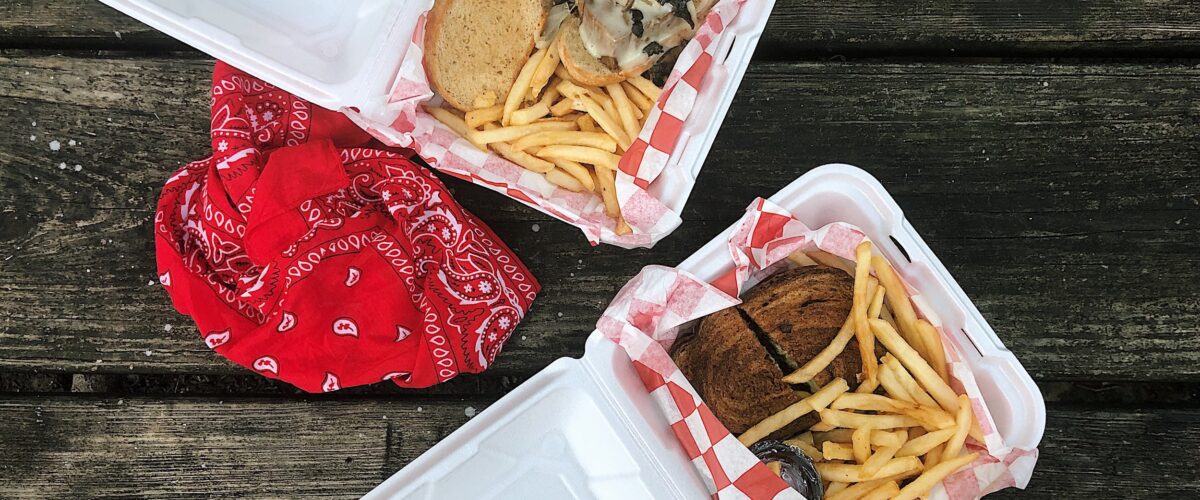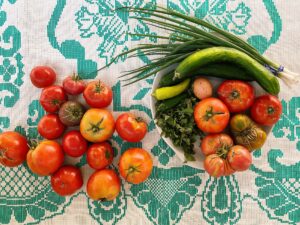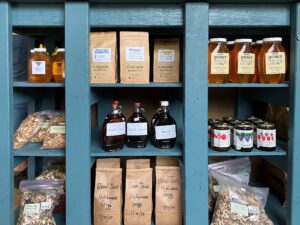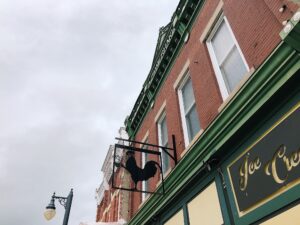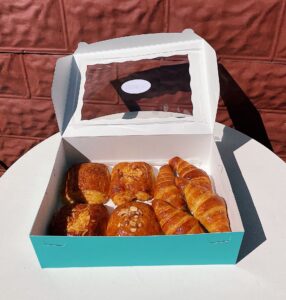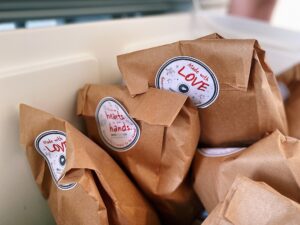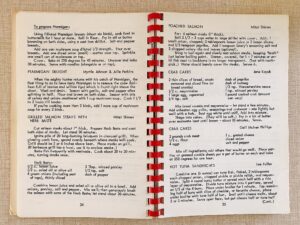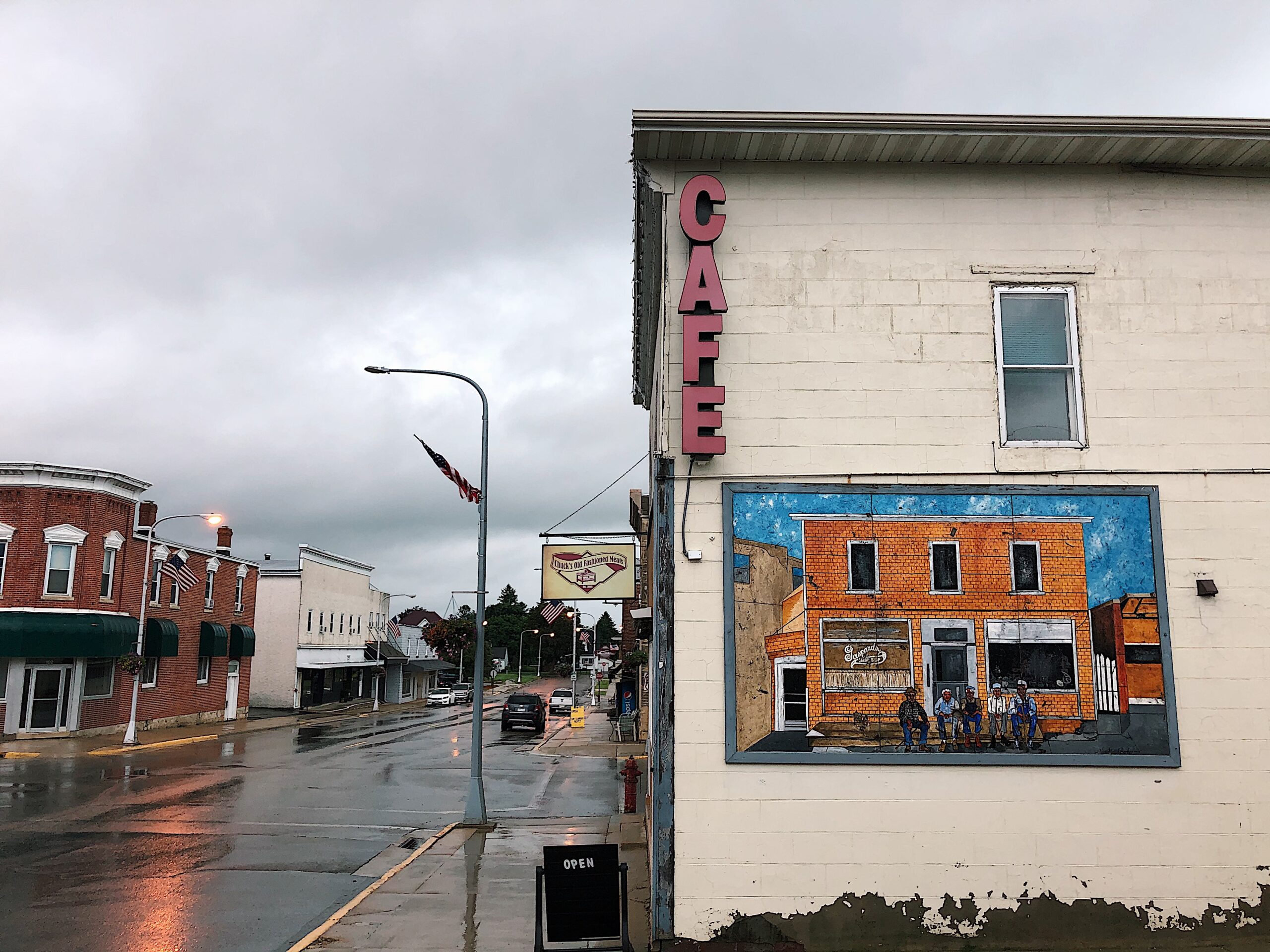This piece on the restaurant world during COVID-19 is part of a larger project to document the culinary resilience of southeastern Minnesota’s Houston County during the pandemic. You can read more about my Crystal Creek Citizen-Artist Residency project here.
While exploring the pandemic’s impact on the restaurant world, I hear a server’s firsthand account. She didn’t want to be at work but was too scared of unemployment. It was like living in two different worlds. She understands both sides—the desire for social gatherings and the growing safety concerns. She wanted the work but didn’t want the risk. Eventually she quit.
This is a common theme as COVID-19 upends the restaurant industry. Daily reports tell of permanent closures as restaurants deal with restrictions and fewer customers. Some are collaborating with other establishments and launching new initiatives to stay afloat. Even chain restaurants are getting creative—the Culver’s in La Crosse is using a hunting blind for drive-thru operations. But regardless of creative ideas and determined owners, the restaurant world continues to struggle.
Kaddy’s Kafe in La Crescent serves the kind of diner food perfect for any hour of the day. On the July day I visit, the staff is fully masked. The outdoor patio tables are full, so I select a booth far away from other diners, happy to see the 50% indoor rule enforced.
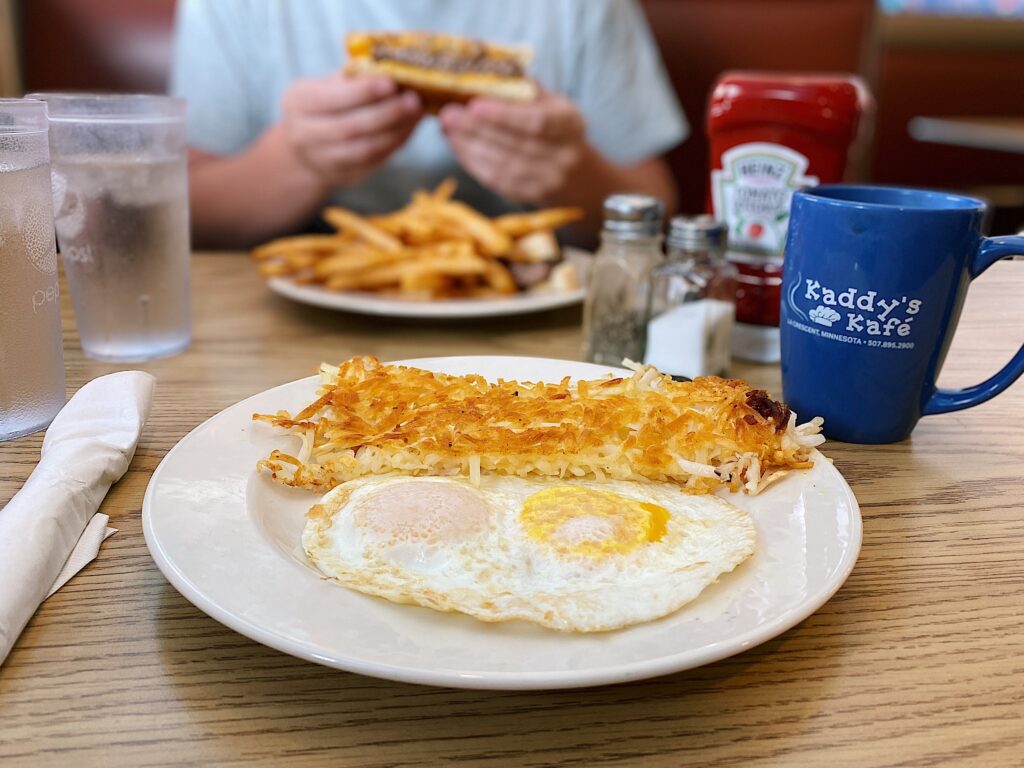
Kaddy’s Kafe recently started offering daily delivery to customers in La Crescent city limits. As they say on their Facebook page, “We are excited to offer this to our local community in this hard time!! Give us a call if you have any questions or cravings, or if the kids are hungry at home, we can help!!”
But restaurants need a population to support them. Little Miami is the only business in Freeburg, an unincorporated community in Houston County. I’m told people used to travel great distances just to eat at this hidden gem of a supper club famous for their alcoholic ice cream drinks.
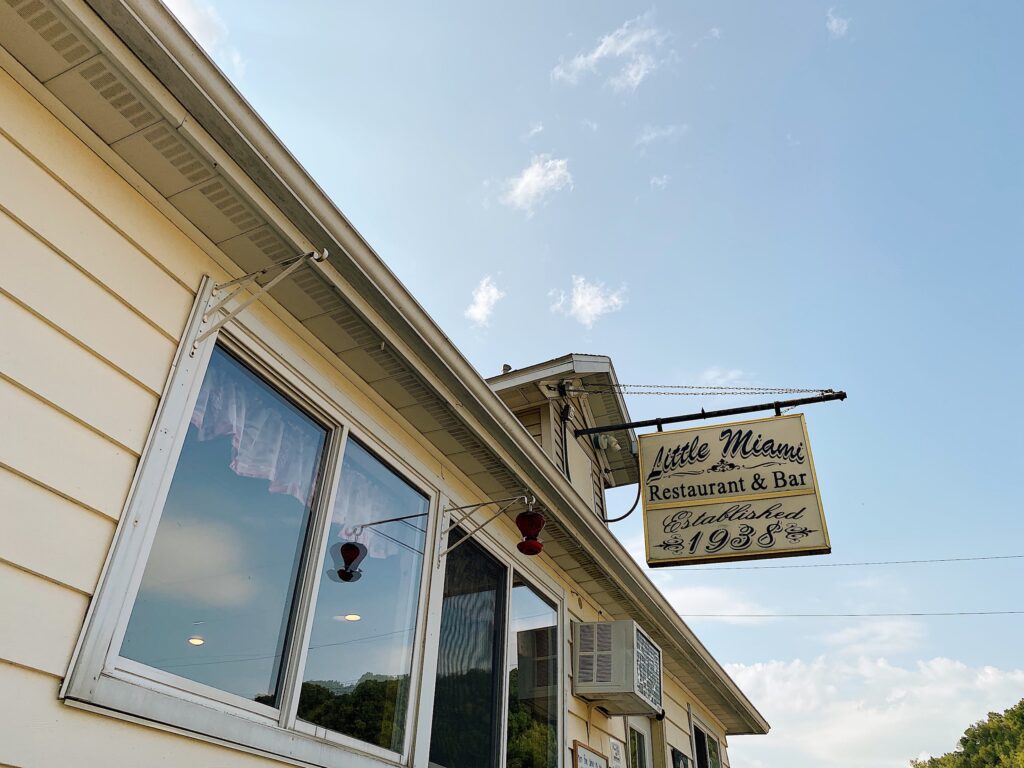
When the pandemic began, Little Miami switched to carry out and then 50% capacity. They removed many of the bar stools, but even those remaining rarely filled. While picking up broasted chicken back in July, I asked the owner about the impact of COVID-19. He said it’s been a hard time. As of November 30, Little Miami decided to temporarily close until early 2021.
As I observe restaurant owners and servers across Houston County, I see the pressures they’re facing. Some patrons think businesses should be even more careful while others demand everything to be open as usual. With cases climbing across the Midwest, the challenge is far from over for these frontline workers.
I interviewed Luke Meyer, owner of JT’s Corner Bar in Houston, on July 31. We sat on the patio in our masks.
Luke tells me it’s been the craziest eight months of his life. Last November, his father was diagnosed with Stage IV cancer. A few weeks later, Luke recalls hearing something on the radio about a coronavirus in China. He never imagined that it would make it to his parents’ house in just four months.
In the midst of chemo treatments, Luke’s father tested positive for COVID-19 and was hospitalized. During that time, the family couldn’t talk to him or be with him. It took him a month and a half to recuperate.
On March 17, the day of the restaurant shutdown in Minnesota, Luke’s third son was born. He had to call his restaurant and tell employees and customers to leave by 5:00pm. “To have my dad go from cancer to COVID-19 to closing our business to having a baby on the day of the shutdown,” Luke says. He apologizes for getting emotional. “It’s been a long year,” he adds.
Throughout the shutdown, JT’s Corner Bar offered curbside to-go on Fridays and Saturdays and kept their liquor store open daily. “I never thought a Friday fish fry and operating a liquor store for four hours a day would have gotten us through a pandemic, but it did,” Luke says with amazement. The Friday fish fry isn’t a new thing, but making fish for takeout is a different ballgame. “To-go containers take up half your kitchen!” Luke points out.
Luke kept staffing minimal and worked as many hours as possible himself. His wife helped with prep, and he cooked Fridays and Saturdays. Payroll was a quarter of what it normally was. Thankfully, many employees received unemployment checks. “I feel bad not being able to help them support their families, but I’m glad money was available,” he tells me.
“If masking will get us past COVID-19, then let’s do it,” Luke says. “Watching my father go through it, he was basically a limp noodle. He couldn’t tell you which day it was or what time it was. If you’re immunocompromised, it’s serious, serious stuff. We have to do our part to minimize risk for our parents,” he urges. “Just do it. It’s not that hard,” he says about masking.
JT’s Corner Bar reopened their doors on June 21—the first time since March 17—with indoor dining capacity at 50% and outdoor seating with umbrellas. Two days later, they learned some of their customers tested positive for COVID-19. They shut down again on June 24. “We had hand sanitizer and were socially distanced, but you can’t control what comes in,” Luke admits.
They finally reopened July 17. Most customers stick with family groups. They’re doing everything they can to ensure customers follow the rules.
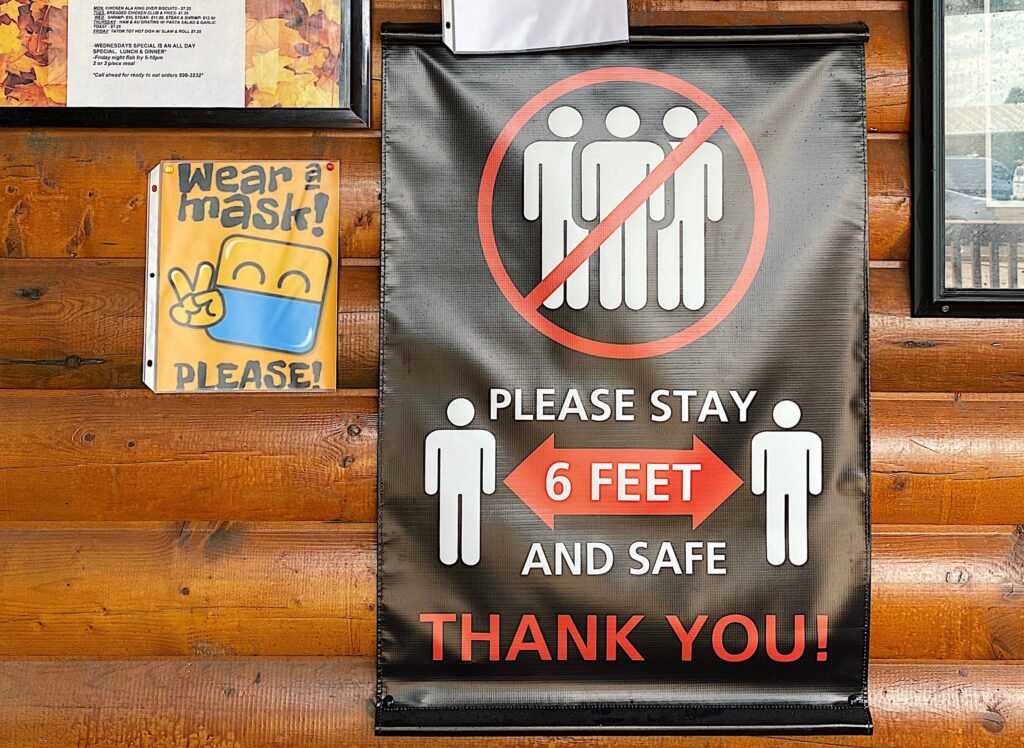
Houston’s annual Hoedown Days was cancelled this year. “It’s our bread and butter,” Luke says. “Our town of 1,000 turns into 10,000. To not have that business, it hurts,” he admits. The business across the street, AcenTek, has been closed this whole time. With 200 employees working from home, Luke lost half his usual lunch crowd.
“I never thought it would last this long. And we’re not there yet. We’re still a long way from smooth sailing,” Luke estimates. “I don’t know if business is ever going to bounce back. Probably 30% of my customers are still afraid to come in. That’s a huge chunk,” he adds.
In addition to juggling safety and staffing concerns, Luke is seeing shifts in food pricing and availability. The price of hamburger went from about $2/pound to $6/pound in June. “You can’t even afford to sell burgers at that price. You’re losing money!” he exclaims. “But that’s how much everything is affected by the meat processing plants,” he adds. Luke mentions he can’t get certain products from his beer and liquor distributors due to shortages.
When JT’s closed in March, all the food in the salad bar went to waste. “Some I could reuse,” Luke says, “But who’s going to want a tub of Jell-O?” The tap soda went flat. “It may be two years before I have a salad bar again,” he adds.
Before leaving, Luke shows me the liquor store, a walk-up counter with a COVID-safe plexiglass divider.

“Had I not had the liquor store, we would have been shut down completely. I don’t know what I would have done. Our bank was really helpful. But thank god for the liquor store,” Luke tells me.
The daily special is Tater Tot Hotdish. I order some to-go. As we say goodbye in the hot July sun, Luke cautions, “I think it’s going to last a while.”
Unfortunately, he was right.

Elisabeth A. Fondell is a writer, potter, and food enthusiast living in the rural Midwest. She is currently working on Food Stories From Houston County, a project documenting stories of culinary resilience in Minnesota’s southeastern-most county through the Crystal Creek Citizen-Artist Residency.
Elisabeth began focusing on place-based food writing after receiving a grant from the Southwest Minnesota Arts Council to create a body of work celebrating the intersection of food and culture. See that exhibit here.

